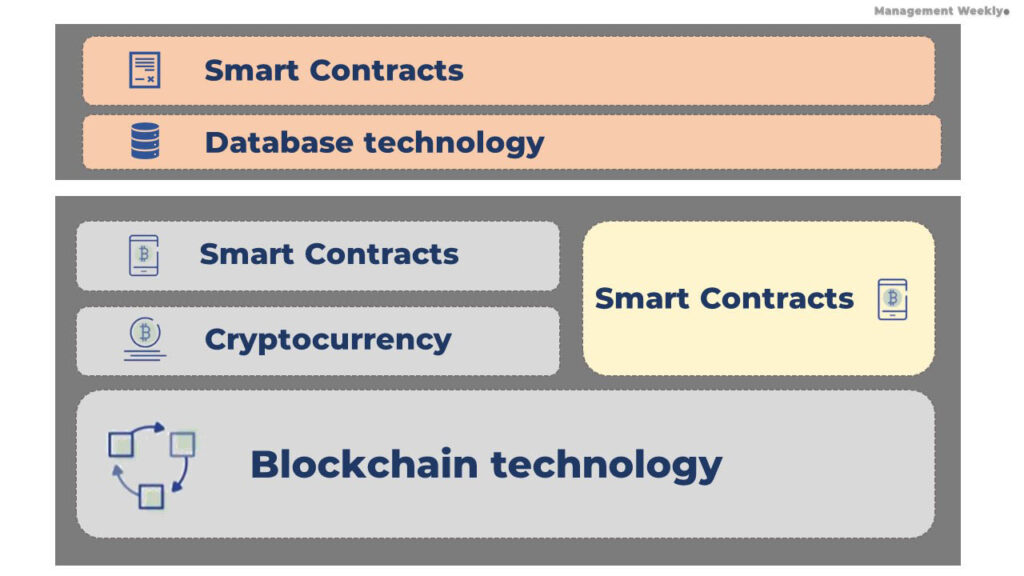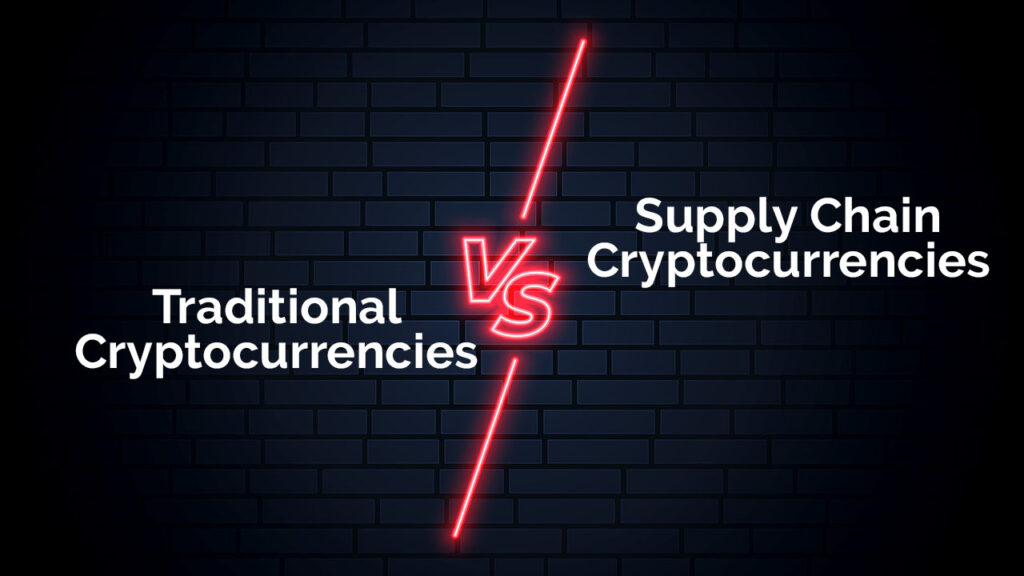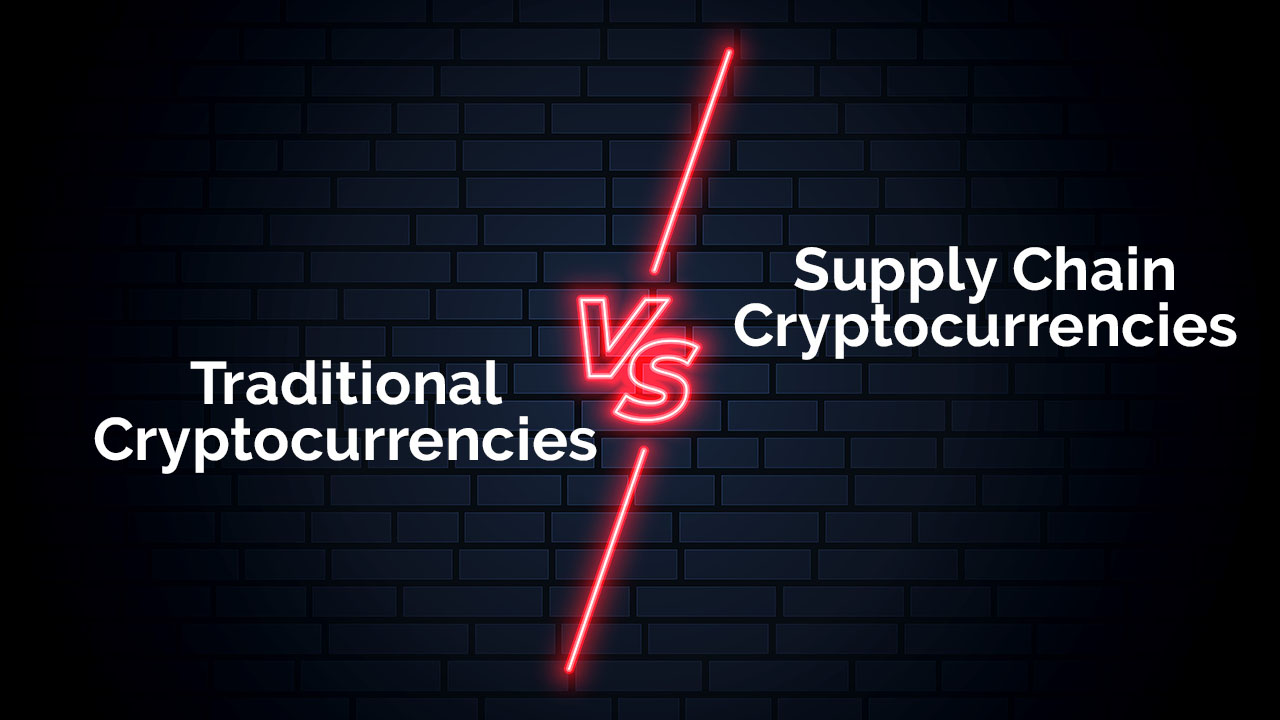The United States witnessed a major scare with the outbreak of a disease. This happened way before anyone had heard about coronavirus. We are talking about the typhoid outbreak of 2017. First, there were was one case in Texas then another, and so on. Soon hundreds of individuals were infected with this nasty bacterial disease. It took a while for the Centre for Disease Control to get a hang of this situation. They were finally able to connect the diseases to the supply chain of papayas and thereby trace the origin to a farm in Mexico. Now, the question is: can we trace the origin of food much faster? Supply chain cryptocurrency can be our answer to this pertinent question. Read more to find out how this new technology can change our supply chains forever.
Contents
Cryptocurrency
We are dawning on a new era. The era of industry 4.0. Blockchain and cryptocurrency can play a major role in the fourth industrial revolution. The promise is to offer some new ways of doing transactions.

At the most basic level, a blockchain is a way to store and verify the information. This information is spread out (decentralized) into the users’ computers. Also, the distributed data makes it very difficult to hack because the same data can potentially reside in thousands or millions of systems. This property of blockchain is called immutability.
Two common applications of blockchain are cryptocurrency and smart contracts. Both of these are also used in the supply chain. However, one should keep in mind that blockchain is the technology, cryptocurrency is the application of this technology. Smart contracts are legal and financial tokens of mutual exchange that can be liked to a cryptocurrency or work on a blockchain.
Cryptocurrency
All our current transactions are managed using traditional currencies like US Dollars or Euros. Banks maintain the record of the account holders in ledgers. When we transfer $1000 to a friend’s account, basically it balances out our ledger with our friend’s. Our new account balance is reduced by $1000 + transaction charges. On the other hand, our friend’s account balance increases by $1000.
Cryptocurrencies also work in the form of ledger bases records for such transactions. However, there are some key differences. The ledgers that track these balances are not kept in a bank. The cryptocurrency system basically creates multiple copies of this ledger and stores it on all the computers that use this technology. Therefore, all the users have a copy of this ledger. When any transaction takes place, it is updated on all the ledgers in the network. This makes it next to impossible to hack.
Cryptocurrency can be exchanged directly between two parties without any intermediary. This reduces the transaction cost as well. In the later sections, we shall see how these new currencies help in making supply chains efficient, reliable, and secure.
Smart Contracts
Thirdly, let us briefly introduce the concept of smart contracts. Smart contracts are basically contracts that are based upon blockchain technology. It enables us to design systems where certain transactions are executed only by authorized parties under pre-established conditions.
For example, a transportation agency may have a smart contract with a factory regarding the handover of consignment. In this case, let us say, once the consignments are received by the factory’s warehouse the items are automatically added to the trade payable and also to the internal goods inventory. The smart contract may enable automatic authorization for the payment against the trade payable. This would have required manual authorization in a non-blockchain-based system.
Why do we need blockchain in the supply chain?
The department of supply chain & operations is an early adopter of this upcoming technology. Currently, we manage the supply chains using enterprise resource planning software or ERP. These systems maintain a centralized system of managing assets, resources, and finances. However, there are certain limitations associated with these traditional systems.
The traditional ERP systems are not designed to automatically handle conflicts or disruptions in the supply chain. Move to manually intervene to audit and correct certain problems. Also, these systems are more vulnerable to attacks and forgeries. Overall, they also slow down the decision-making process.
One of the biggest contributions of blockchain is that it is going to integrate the informational and financial flow across the supply chain. The use of supply chain cryptocurrency will help us have real-time control over the systems. Therefore, we shall be able to manage three critical flows of the operations and supply chain department:
- Inventory flow
- Monetary flow
- Information flow

Inventory flow
The first step is the movement of raw materials from the suppliers to a firm. On the other hand, we have the movement of finished goods from a firm to the customer. People in an automobile phone. The raw materials can be parts that they procure from suppliers. Is the vehicle which is dispatched to the wholesalers or retailers.
Traditionally, ledgers were used to track the inventory flow. Although they are quite at keeping track of the movement of goods, they do not capture enough information to aid in real-time analysis and fault detection
Financial flow
We can also imagine the entire supply chain in the form of a financial flow. As the raw material moves from the suppliers to the firm. In this state, basically, we are adding some value to the raw materials. This value is being added when we create a good that is superior to the raw materials in terms of functionality.
Similarly, the finished gold also changes hands from the firm to the suppliers and eventually to the customer. At each stage of the supply chain, there is a change in the value of the consumer goods and services.
Information flow
Similarly, there is a flow of information that takes place throughout the entire supply chain. Different managers have got different levels of access to this information. However, you can imagine that the flow of information takes place from the different stages or touchpoints to the firm’s database.
For example, when a shipment is received by inland transportation, it gets scanned and recorded in the system. This information is reflected in the inventory management software.
Integrating these three flows using blockchain
Blockchain-based systems basically integrate all these different information flows into one coherent system. And we attach a cryptocurrency-based transaction to the supply chain, we are automatically ensuring that cost, quality, quantity variables are updated. Further, these variables are difficult to fudge because blockchain technology uses distributed ledgers.
Advantages of using supply chain cryptocurrency
The use of cryptocurrency in the supply chain brings in a lot of advantages. As we have discussed earlier, the primary advantage is the integration of the three different types of flows. However, we also have other tangible benefits.

- The use of crypto currency reduces the amount of paperwork. When we go for a digital currency like crypto currency, we are automatically reducing the amount of paperwork that is involved in the transfer of ownership as the consignment is transported from one location to another. We can automate a lot of these steps. Therefore, we also reduce the paperwork involved. For example, there can be up to 30-50 change of hands for a consignment that travels across continent from a country like Vietnam to Norway. Each step can introduce some uncertainty and point of error when we use paper-based system.
- The use of blockchain also offers higher accuracy and reliability in tracking of the goods movement. As we have discussed in the earlier point, the news of blockchain also allows us to minutely monitor each step of the shipment. Although this can be done using RFID tags in dependently from the blockchain. However, when we attached the value of goods using cryptocurrency, then it includes a higher level of protection.
- Another advantage of using cryptocurrency in supply chain is that it deters privacy and counterfeit products. There are certain goods which are extremely valuable and also prone to piracy. For example, let us consider that a box of luxury shoes is shipped from Italy to Shanghai. It becomes impossible for the retailers to track where the goods came from and validity of the same. Similarly, we consider the case of diamonds. Using cryptocurrencies, we can track the origin of the goods. Later we shall see how certain cryptos allow us to do this.
- The use of cryptocurrency also increases the visibility of the movement. This helps us in monitoring the movement of goods in a more granular manner. It is extremely helpful in scheduling. For instance, when we had the COVID-19 pandemic. It led to widespread disruption of the supply chain. In these critical times, it became very important to understand where the goods were stuck in the supply chain process. Companies that have used modern tracking systems. Are able to track the movement of goods. This tracking becomes much more accurate when we use blockchain technologies like cryptocurrency and smart contracts.
- The use of cryptocurrency in supply chain also increases the resilience of the supply chain. Cryptocurrency also helps in the analytics. Firstly, it can reduce the time between the event occurrence and detection. Secondly, it also improves the speed of decision-making once we realize that there is some problem. Thirdly, it also helps in understanding where the fault lies and correcting it without human intervention.
- Finally, one of the advantages of using cryptocurrency in supply chain is that it helps us in origin tracing. Origin tracing is a method that we use to trace the point of origin for a product or for any longer. This has become extremely important when we see that there are certain problems associated with specific raw materials used in products. Apple had come under a lot of scrutiny for using conflict materials. Conflict materials are those materials that are sourced from countries which have problematic geopolitical situation or employ child labor or are detrimental to the environment.
Supply Chain Cryptocurrency
The most common cryptocurrencies are Bitcoin and Ethereum. However, we have a lot of other viable options. Some of the best cryptos to invest in are Raven coin and Binance Coin. However, here we shall take a closer look at some cryptos that offer supply chain-specific features natively.
The cryptocurrencies that are used in the supply chain have caught certain small but meaningful differences from the traditional cryptocurrencies. These differences are primarily in terms of the number of parties involved and the kind of anonymity that the platform offers.
| Traditional Cryptocurrencies | Supply Chain cryptocurrencies |
| An unlimited number of parties. | A limited number of parties. |
| The anonymity of transactions is favored. | Knowledge of transacting parties is essential. |
1. Blockshipping Container Platform Token
Blockshipping is a Danish firm that is also one of the pioneers of blockchain solutions in the supply chain. Their platform is called Global Shared Container Platform (GSCP) and their currency is called Blockshipping Container Platform Token or CPT. The crypto is internally traded by the partners and the benefits are shared as per the revenue sharing model.
Their aim is to decentralize the shipping industry. Currently, most of the tracking and paperwork is handled by the shipping companies and ports. However, the cryptocurrency company is founded by senior executives from Maersk, so they may have greater control over the regulations regarding this cryptocurrency.
2. VeChain
Vechain is one of the leading corporate cryptos. Unlike consumer cryptos like Bitcoin or Ethereum, they are dedicated to offering features that can work with industry 4.0 technologies like IoT, AR, VR. They offer specific proof of concept models for supply chain applications such as food safety, lifecycle assessment, luxury and consumer goods, and automotive applications.
For instance, they offer a unique solution called ‘Automotive Passport’. This offering works over their crypto and seamlessly integrates the different stages of the product life cycle of automobile production, supply chain, retail, and service. Interested readers may look up more information on VET and VTHO, which represent their offerings as useful for supply chain management.
3. Ambrosus
Ambrosus is a relatively smaller company but offers very specific products for the supply chain management. They offer permissioned blockchain-based management of resources. Currently, it is used by over 500 decentralized operators in their own networks. Some of their clients are in the pharma and food industry. It can help in keeping track of perishable items by monitoring aspects like freshness and quality.
Ambrosus helps in integrating the futuristic data coming from channels like RFIDs and IoT devices into the traditional ERP systems. They call this system Ambrosus Network or AMB-NET. Their crypto is called AMB.
4. Doftcoin
Doft is also known as the Uber of the trucking world. It doesn’t really act as an intermediary between the logistic operators and customers who need trucking service. Presently there are about 400,000 truckers that work in the United States. Doft aims to integrate this entire nationwide network. The taxi sharing services like Uber, charge the taxi operators for each ride. However, Doft has a different payment model. They charge about 4.99% fees from both parties.
One of the unique ways in which Doft aims to differentiate itself from the competitors is through the use of blockchain. They have introduced a new cryptocurrency called Doftcoin. Doft had their ICO or the initial coin offering around four years ago on 27th November. They highlighted some key advantages of this new cryptocurrency. Firstly, all the transactions that take place using this cryptocurrency will be immediate. Therefore, the truckers and the customers would be saving on the time that it takes for the transfers to take place from one bank to another. Secondly, the Daftcoin interface is designed to be scalable. Air for location and geography would not be a constraint in the expansion of the Doft network.
Opening Example – Maradol Papayas
Let us get back to our opening example of papaya borne typhoid outbreak. It may not seem alarming at first. However, such outbreaks are more common than one may think. Forbes reports that such outbreaks that happen because of food, kill around two million people each year worldwide.
The adoption of supply chain cryptocurrency can help us detect such outbreaks earlier by tracking the supply chain. It can also save lives by early detection of the sources. Therefore, we can isolate such sources and prevent further damage.
Therefore, the application of blockchain also reduces the economic risks associated with supply chains. In another case, we also saw another outbreak that could have been handled much better-using supply chain cryptocurrency. In 2015 there was an outbreak of E. Coli bacteria at Chiptole Mexican Grill in Washington. This outbreak led to a decline in stock prices by over 42%. The company had to shell out Dollar 25 million as a federal fine as well.

Where’s Morpheus and Smart MFG?